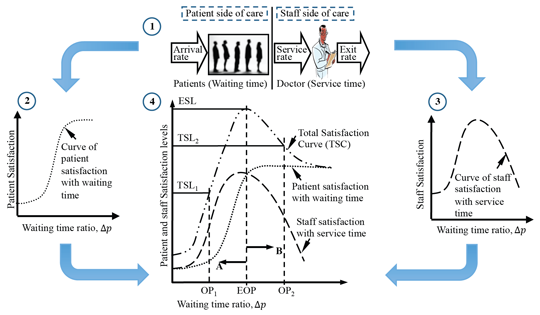
This paper investigates the connection between patient satisfaction, waiting time, staff satisfaction and service time. It uses a variety of models to enable improvement against experiential and operational health service goals. Patient satisfaction levels are estimated using a model based on waiting (waiting times). Staff satisfaction levels are estimated using a model based on the time spent with patients (service time). An integrated model of patient and staff satisfaction, the Effective Satisfaction Level (ESL) model, is then proposed (using queuing theory). This links patient satisfaction, waiting time, staff satisfaction, and service time, connecting two important concepts, namely experience and efficiency in care delivery and leading to a more holistic approach in designing and managing health services. The proposed model will enable healthcare systems analysts to objectively and directly relate elements of service quality to capacity planning. Moreover, as an instrument used jointly by healthcare commissioners and providers, it affords the prospect of better resource allocation.
View full article

